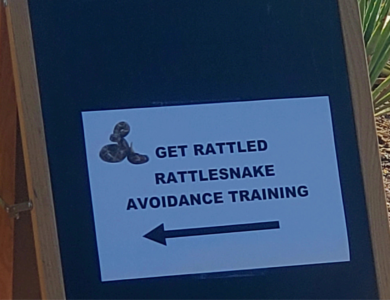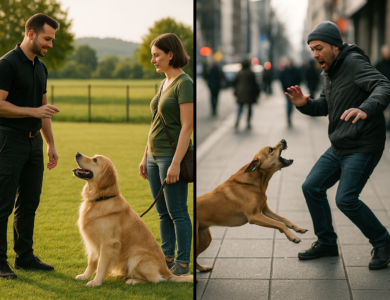We may earn a commission when you click on links across our website. This does not influence our opinions — learn more.
Could Pet Stores Be the Surprising Solution to Nevada’s Shelter Crisis?

Las Vegas is facing a breaking point — one that could define how our city handles animal welfare for years to come.
On November 5, 2025, the City Council will vote on a proposal to ban the sale of dogs and cats in pet stores. If passed, the measure would take effect three years later, in 2028. The timing couldn’t be more striking: just blocks from shops still selling puppies sourced from commercial breeders, The Animal Foundation is bursting at the seams, caring for more than 520 dogs and operating under what officials describe as “critical capacity.”
The contrast is painful to witness. On one side, glossy retail displays filled with expensive puppies; on the other, shelter staff desperately trying to make space for dogs that have nowhere else to go. But maybe — just maybe — this moment offers something rare: a chance to turn old rivals into allies. What if, instead of seeing pet stores as part of the problem, Nevada treated them as part of the solution?
Legislation Collides with Crisis
The state’s patchwork of laws around pet sales has long created confusion. Clark County, North Las Vegas, and Mesquite have already enacted full bans on the sale of commercially bred animals. Henderson has allowed existing stores to continue operations while blocking any new ones from opening. Only Las Vegas remains the outlier — home to 13 of Nevada’s 15 puppy-selling shops, creating what animal welfare advocates describe as a “puppy mill to pet store pipeline.”
The proposed ordinance, introduced by Mayor Shelley Berkley and Councilwoman Nancy Brune, aims to finally close that gap. It would prohibit new stores from selling dogs and cats, while giving existing businesses a three-year grace period to adapt. That buffer isn’t an afterthought — it’s a recognition that change must be managed thoughtfully, not punitively.
At the same time, The Animal Foundation’s situation has become dire. The shelter has experienced a staggering 61 percent increase in animal intake since 2020, with more than 3,000 pets surrendered between January and August of this year alone — the highest number in nearly a decade. In a single week this fall, 168 dogs arrived; by mid-October, 523 were on-site, leaving “nowhere to put them.”
CEO Hilarie Grey has been blunt about the pressures driving the crisis. “There are people who have lost their jobs,” she explained. “There are issues with having enough affordable housing in our community and with regulations over apartment complexes that not only can charge pet deposits, but also pet rent.”
How Bans Became Boons
When California became the first state to ban the retail sale of commercially bred pets in 2019, critics predicted disaster. Pet stores, they warned, would shutter in droves. But that didn’t happen. Many stores simply reinvented themselves — shifting from selling animals to facilitating adoptions — with West Hollywood going a step further and deciding to ban the sale of all live animals in pet stores.
In Los Angeles, Bark n’ Bitches proved what’s possible. The store stopped buying puppies from breeders and began partnering with high-kill shelters. The change transformed their business. “We’ve completed thousands of adoptions since 2009,” said manager Jeana Alessio, noting that customers have become “like family.”
Financially, the logic holds. California’s law still allows stores to operate — they just source animals from shelters and nonprofits. Retailers can charge adoption fees (often $300–$500), host adoption events, and continue selling food, toys, grooming services, and accessories. The result? The broader $143 billion U.S. pet supply and service industry hasn’t just survived; it’s thriving.
Rebecca Goff of Humane World for Animals has seen the same trend. “The pet store supply and service industry is a $143 billion industry,” she said. “It is thriving.”
Why Shelters and Stores Need Each Other
If the California experience proves anything, it’s that collaboration between shelters and retailers can work. National chains like Petco and PetSmart abandoned animal sales years ago, opting instead to partner with local shelters and rescues. The model is simple but powerful: stores supply the space, shelters supply the animals, and both benefit.
For shelters, partnerships expand visibility far beyond their own facilities. Potential adopters who might never set foot in a shelter are suddenly meeting adoptable pets in bright, welcoming retail spaces. For stores, the arrangement keeps foot traffic steady, bolsters their image as compassionate community hubs, and provides endless opportunities to sell pet-related products and services. And for the animals themselves, it’s nothing short of life-saving — adoption rates soar, stress levels drop, and euthanasia numbers fall.
Nevada’s Moment to Lead
Clark County has already approved $39 million to build an additional shelter and another $3 million to create temporary emergency space at Silver Bowl Park. But buildings alone won’t solve the problem. As long as intake continues to outpace adoption, capacity will always be a crisis.
Here’s what makes the current moment extraordinary: forty-five pet stores across Nevada have already voiced support for Cindy Lou’s Law — the failed statewide ban introduced earlier this year. For every store that still sells puppies, three others support ending the practice altogether. That’s not rebellion; it’s recognition that the future of pet retail lies elsewhere.
For the 13 Las Vegas stores still selling puppies, the three-year transition period could be a lifeline — not a sentence. They can spend that time establishing partnerships with groups like The Animal Foundation, Nevada SPCA, and Las Vegas Valley Humane Society. They can maintain steady income through supply sales, grooming, and training services. They can rebrand as ethical leaders in the community rather than relics of a bygone era.
The Puppy Mill Connection
The urgency of reform isn’t theoretical. Investigations by Humane World for Animals found that 12 of Nevada’s 15 puppy-selling stores bought from breeders cited in the organization’s “Horrible Hundred” report — a list of some of the nation’s most notorious puppy mills.
One story in particular galvanized public outrage: Cindy Lou, a Havanese puppy, died at a Las Vegas clinic after the store that sold her, Puppy Heaven, delayed critical veterinary care. Her death became the namesake for the state’s proposed legislation. It’s a heartbreaking reminder of what’s at stake.
Every time a puppy is sold from one of these operations, another order is placed, another dog is bred in misery. But when stores transition to adoptions, the dynamic flips — every adoption saves a life instead of fueling suffering.
The Economics of Compassion
Opponents often insist that stores can’t survive without animal sales. Alyssa Miller of the Pet Advocacy Network has argued that businesses “could not survive if pet sales were taken away.” But the data tells a different story. While a handful of stores did close in California, many more adapted and even grew.
Modern pet retail isn’t built on selling animals — it’s built on serving them. Americans spent $53 billion on pets in 2013 alone, from food and grooming to daycare and veterinary care. As The Animal Foundation has noted, people “treat their pets like family” and “spoil them as much as possible.” That spending is only growing.
Stores that pivot can easily replace lost revenue. They can charge modest adoption fees, sell “new pet starter kits,” offer grooming and training packages, and host recurring adoption events that bring in a constant flow of customers. Compassion and commerce can coexist — they already do across the country.
A Shared Path Forward
The Pet Advocacy Network warns that bans could create a black market for unregulated breeders. Yet California’s experience shows this fear is largely unfounded. Responsible breeders still operate freely, selling directly to families. The target isn’t responsible breeding — it’s industrialized cruelty.
For Nevada, the path ahead is clear. Pet stores should act now, visiting California’s successful adoption-based retailers to learn best practices. They can connect with local shelters, attend adoption events at PetSmart or Petco, and start forging partnerships before legislation forces their hand.
Shelters, too, should seize the moment — reaching out proactively to stores, offering logistical and marketing support, and presenting the economic upside of collaboration.
A Chance to Be Heroes
Nevada’s pet stores have a rare chance to rewrite their own story. The city’s overcrowded shelters, the looming 2028 deadline, and the legislative momentum all point toward the same conclusion: the old model is dying, and the new one could save lives.
As Hilarie Grey of The Animal Foundation put it, “With such a variety of breeds, sizes, and ages, including puppies and kittens, there is no justification for the ongoing pipeline from puppy mills. People can easily find the pet they desire.”
If pet stores embrace that truth, they won’t just survive — they’ll lead. For the animals crammed into shelter kennels tonight, that shift can’t come soon enough.



